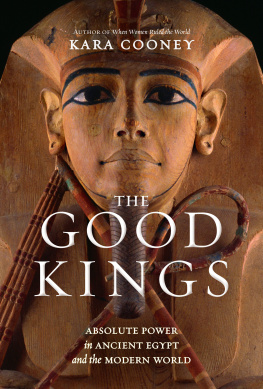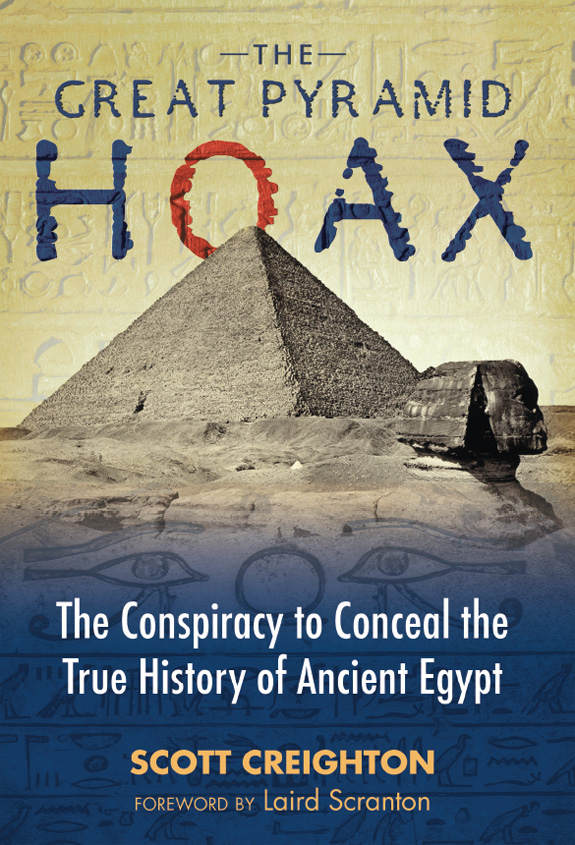Scott Creighton - The Great Pyramid Hoax: The Conspiracy to Conceal the True History of Ancient Egypt
Here you can read online Scott Creighton - The Great Pyramid Hoax: The Conspiracy to Conceal the True History of Ancient Egypt full text of the book (entire story) in english for free. Download pdf and epub, get meaning, cover and reviews about this ebook. year: 2016, publisher: Bear Company, genre: Religion. Description of the work, (preface) as well as reviews are available. Best literature library LitArk.com created for fans of good reading and offers a wide selection of genres:
Romance novel
Science fiction
Adventure
Detective
Science
History
Home and family
Prose
Art
Politics
Computer
Non-fiction
Religion
Business
Children
Humor
Choose a favorite category and find really read worthwhile books. Enjoy immersion in the world of imagination, feel the emotions of the characters or learn something new for yourself, make an fascinating discovery.

- Book:The Great Pyramid Hoax: The Conspiracy to Conceal the True History of Ancient Egypt
- Author:
- Publisher:Bear Company
- Genre:
- Year:2016
- Rating:4 / 5
- Favourites:Add to favourites
- Your mark:
The Great Pyramid Hoax: The Conspiracy to Conceal the True History of Ancient Egypt: summary, description and annotation
We offer to read an annotation, description, summary or preface (depends on what the author of the book "The Great Pyramid Hoax: The Conspiracy to Conceal the True History of Ancient Egypt" wrote himself). If you haven't found the necessary information about the book — write in the comments, we will try to find it.
Includes evidence from the time of the discovery of the marks: Vyses private field notes, surveys, facsimile drawings, and eye-witness testimony
Explains why Vyse was driven to perpetrate a fraud inside the Great Pyramid
Examines recent chemical analysis of the marks and high-definition photos to reveal errors and other anomalies within the forged Khufu cartouche
Despite millennia of fame, the origins of the Great Pyramid of Giza are shrouded in mystery. Believed to be the tomb of an Egyptian king, even though no remains have ever been found, its construction date of roughly 2550 BCE is tied to only one piece of evidence: the crudely painted marks within the pyramids hidden chambers that refer to the 4th Dynasty king Khufu, discovered in 1837 by Colonel Howard Vyse and his team.
Using evidence from the time of the discovery of these quarry marks--including surveys, facsimile drawings and Vyses private field notes--along with high definition photos of the actual marks, Scott Creighton reveals how and why the marks were faked. He investigates the anomalous and contradictory orthography of the quarry marks through more than 75 photos and illustrations, showing how they radically depart from the established canon of quarry marks from this period. He explains how the orientation of the Khufu cartouche contradicts ancient Egyptian writing convention and how one of the signs is from a later period. Analyzing Vyses private diary, he reveals Vyses forgery instructions to his two assistants, Raven and Hill, and what the anachronistic sign should have been. He examines recent chemical analysis of the marks along with the eye-witness testimony of Humphries Brewer, who worked with Vyse at Giza in 1837 and saw forgery take place. Exploring Vyses background, including his electoral fraud to become a member of the British Parliament, he explains why he was driven to perpetrate a fraud inside the Great Pyramid.
Proving Zecharia Sitchins claim that the quarry marks are forgeries and removing the only physical evidence that dates the Great Pyramids construction to the reign of Khufu, Creightons study strikes down one of the most fundamental assertions of orthodox Egyptologists and reopens long-standing questions about the Great Pyramids true age, who really built it, and why.
Scott Creighton: author's other books
Who wrote The Great Pyramid Hoax: The Conspiracy to Conceal the True History of Ancient Egypt? Find out the surname, the name of the author of the book and a list of all author's works by series.







